Washington D.C. – US President Donald Trump has once again made explosive assertions about his role in preventing warfare between India and Pakistan, with Trump Modi Ceasefire Claims dominating headlines as the President detailed his alleged intervention during May hostilities. Speaking at a cabinet meeting, Trump described his conversation with Prime Minister Narendra Modi and claimed credit for brokering peace within five hours.
Cabinet Meeting Revelations and Timeline
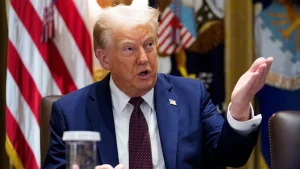
The latest Trump Modi Ceasefire Claims emerged during a cabinet meeting where Trump recounted his alleged diplomatic intervention in the India-Pakistan conflict. The President described speaking with Modi at the height of bilateral hostilities in May, characterizing the Indian Prime Minister as “a very terrific man” during their crucial conversation.
These Trump Modi Ceasefire Claims come at a particularly sensitive time, occurring just hours before Trump’s new tariff measures on India were scheduled to take effect on August 27, raising overall tariff burden on Indian goods to nearly 50 percent.
Detailed Account of Alleged Intervention
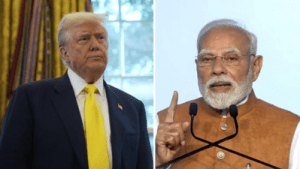

Trump’s Trump Modi Ceasefire Claims included specific details about his conversation with Modi, where he allegedly asked about the situation with Pakistan. The President described “tremendous hatred” between the countries, acknowledging that tensions had persisted “for hundreds of years, sometimes with different names.”
According to the Trump Modi Ceasefire Claims, Trump threatened to cancel trade deals and impose punitive tariffs if the conflict escalated. He quoted himself as telling Modi: “I don’t want to make a trade deal with you…You guys are going to end up in a nuclear war…we’re going to put tariffs on you that are so high, your head’s going to spin.”
Five-Hour Resolution Timeline
The most striking aspect of the Trump Modi Ceasefire Claims involves the alleged speed of resolution, with Trump asserting that the ceasefire was achieved “within about five hours” of his intervention. This rapid timeline suggests unprecedented diplomatic efficiency, if accurate.
The Trump Modi Ceasefire Claims include Trump’s confidence about preventing future conflicts, stating: “Now maybe it starts again. I don’t know. I don’t think so, but I’ll stop it if it does. We can’t let these things happen.”
Conflicting Aircraft Loss Claims
Previous Trump Modi Ceasefire Claims have included varying accounts of military losses during the conflict. In this latest version, Trump mentioned “seven jets were shot down,” contrasting with earlier claims of “five planes” being downed, though he did not specify which country’s aircraft were allegedly destroyed.
Also Read: Trump India Tariff Deadline Today: Devastating 50% Trade War Hits Indian Exports
These inconsistencies in Trump Modi Ceasefire Claims raise questions about the accuracy and reliability of the President’s account of events during the May hostilities.
India’s Consistent Response and Denial
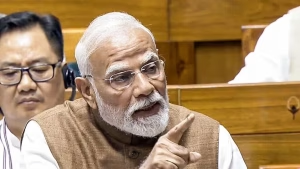
Despite repeated Trump Modi Ceasefire Claims, New Delhi has consistently dismissed the US President’s assertions about his role in the ceasefire. Indian officials maintain that the May 10 ceasefire resulted from direct contact between Pakistan’s Director General of Military Operations and his Indian counterpart.
India’s position directly contradicts Trump Modi Ceasefire Claims by emphasizing that the agreement was bilateral and unconditional, achieved without any third-party intervention or mediation from external powers including the United States.
Nuclear War Prevention Assertions
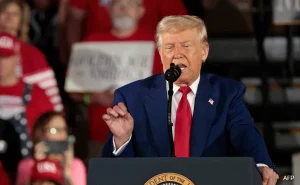

Central to the Trump Modi Ceasefire Claims is Trump’s assertion that he prevented nuclear conflict between the South Asian neighbors. The President positioned his intervention as crucial for global security, suggesting that without his involvement, the situation could have escalated to catastrophic levels.
These Trump Modi Ceasefire Claims about nuclear war prevention add gravity to Trump’s narrative while raising questions about the actual severity of the May conflict and whether nuclear escalation was genuinely imminent.
Trade Deal Leverage Strategy
The Trump Modi Ceasefire Claims reveal Trump’s strategy of linking trade relationships with conflict resolution, using potential economic benefits as diplomatic leverage. His threat to cancel trade deals and impose severe tariffs demonstrates the interconnected nature of economic and security considerations in his foreign policy approach.
This aspect of Trump Modi Ceasefire Claims shows how Trump allegedly used America’s economic relationship with India as a tool for conflict prevention and regional stability.
Timing and Tariff Implementation Context
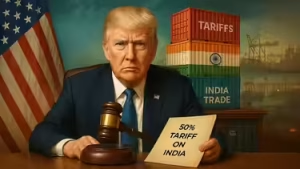
The timing of these renewed Trump Modi Ceasefire Claims is particularly significant, occurring just before implementation of substantial tariff increases on Indian goods. This coincidence raises questions about whether the claims serve multiple purposes, including justifying current trade policies.
The Trump Modi Ceasefire Claims thus become part of broader US-India relations discourse, where trade disputes and security cooperation intersect in complex ways.
Pattern of Intervention Claims
These Trump Modi Ceasefire Claims fit within a broader pattern of Trump asserting credit for preventing or resolving international conflicts. The President has made similar claims about other global situations, positioning himself as a crucial peacemaker in various regional disputes.
Conclusion
The latest Trump Modi Ceasefire Claims represent another chapter in ongoing disputes about the nature and extent of US involvement in South Asian security matters. While Trump continues asserting crucial intervention roles, India maintains its position that bilateral issues are resolved through direct engagement without external mediation. These conflicting narratives reflect broader tensions in US-India relations amid evolving global dynamics and trade disputes.

